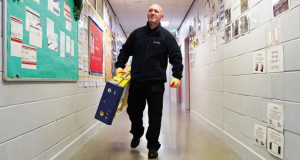David Cross, Head of Rentokil Pest Control’s Technical Training Academy, provides a guide to troublesome pests and where to find them
Hit film Fantastic Beasts and Where to Find Them captured audiences’ imaginations by exploring magnificent animals that were considered pests when found outside the magical world. For example, the Bowtruckle, Erumpent and Niffler all caused issues for city dwellers outside their natural environment despite their lovable, mischievous personas.
Some similarities can be drawn between the film and pests found in the UK. Cockroaches, flies and rodents have roles in the food chain, but can cause problems when allowed to thrive in close quarters to humans as they are unhygienic and can carry disease. Facilities managers must comply with strict health and safety regulations to prevent such pests from taking hold in their premises. This article describes popular hideouts for flies, cockroaches and rodents, all of which can often be found in large facilities which provide the food, shelter and warmth they need to thrive.
FRUIT FLIES

These tiny flies can lay up to 500 eggs at a time, and once hatched their larvae feed directly on over-ripened food, souring milk or fermenting liquids. These pests can reach full development within just seven days (at only 15 degrees Celsius), so an infestation can take hold very quickly. It’s important to keep premises clean in order to control their numbers. Work closely with cleaning staff to design a schedule that covers a regular clean of walls, floors, ceilings and windows, as well as collecting food waste regularly before bins start overflowing.
Fly screens across windows can prevent the insects from entering premises while ensuring cool air flows in and out of the office in hotter months. Sustainable fly control units are also available which encapsulate the flies rather than zapping them, ensuring that particles do not fall on to surfaces and food.
GERMAN COCKROACHES
You might not ever think to look for a cockroach in the coffee machine, but these insects actually find them an appealing place to live. They provide the ideal humid conditions for these pests (and other insects), especially the German cockroach.

If you identify a cockroach infestation in your coffee machine or elsewhere in your premises, take immediate action. Cockroaches aren’t known for good personal hygiene and can carry diseases such as salmonella, dysentery and gastroenteritis. Keep them away with a regular clean of the coffee machine and surrounding areas, sweeping up food debris and properly disposing of waste. There are treatments such as sprays, gel baits and dusting powders that are safe and targeted, limiting the risk of people inadvertently coming into contact
with them.
RATS AND MICE
Rodents can be one of the most damaging pests in a workplace. They are capable of spreading disease and they are hardwired to gnaw. In order to keep their teeth at a manageable size, they will chew on just about anything they can sink their teeth into. This could result in damaged electrical equipment as well as an increased fire risk.

Advise colleagues to ensure their food waste is properly sealed and stored at the end of the day, and when walking around the facility look out for any obvious holes in the exterior of the property. These should be sealed with wire wool, caulk, metal kick plates or cement.
Some people might not think one rodent sighting warrants immediate attention, but a problem can escalate if left untreated. Mice typically like to stay hidden out of sight as it helps them feel safe, so seeing one mouse may be an indication of a larger problem. They also have a relatively quick reproductive cycle, so failing to act could create the conditions for an isolated issue to turn into a full infestation.
All staff should be aware of the signs of a pest problem. There are free online courses (such as Rentokil’s myLearning) which can educate employees on the basic elements of pest control, including the biology of the animal. Having so many eyes on the lookout considerably assists the FM in spotting infestations.
Whether you are dealing with or preventing a fly, cockroach or rodent issue, it’s important that you know who to contact. External contractors should be fully up to date on the latest techniques and legislation changes in their area of expertise. Pest controllers are no different, so if you’re in any doubt as to what methods to use, then it’s always best to check with the experts.






